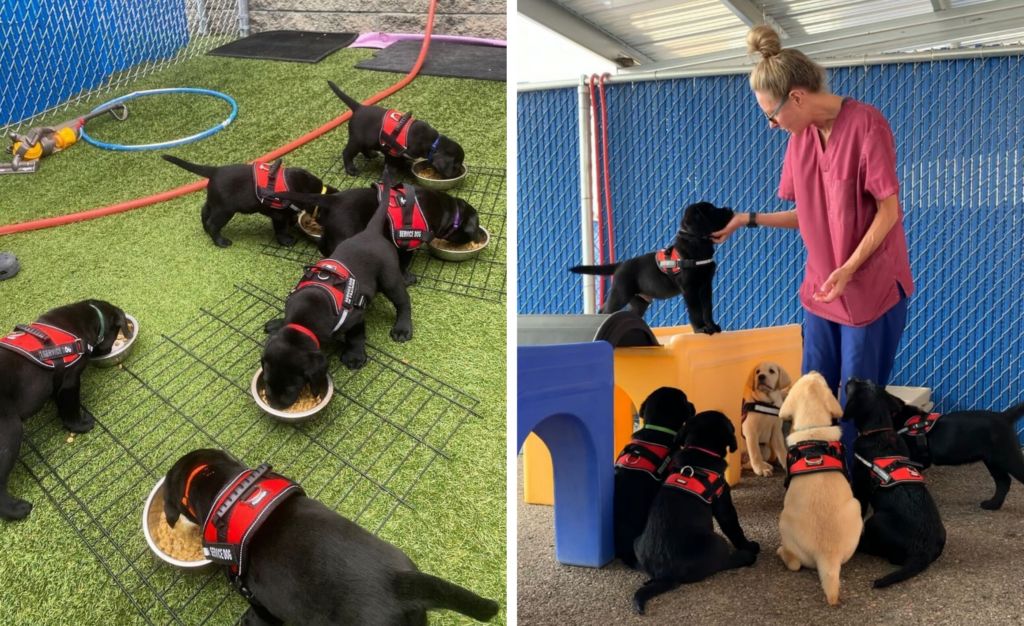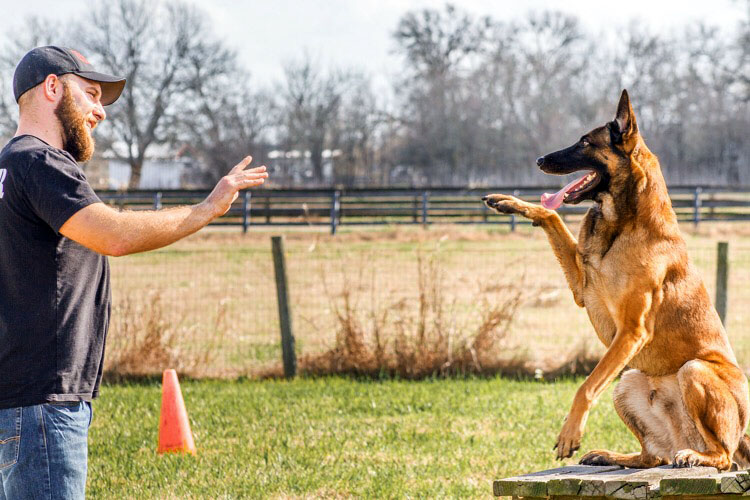Transform Your Pet's Behavior With Proven Training Methods
Transforming your canine's actions requires a nuanced understanding of their individual qualities and needs, as well as the application of tried and tested training techniques. Consistency in your training method not only enhances obedience but also fosters a deeper bond of trust and respect in between you and your pet dog.
Comprehending Pet Dog Actions
Recognizing canine habits is vital for reliable training and interaction between people and their canine friends. Pets, as social pets, display an array of actions affected by genes, setting, and experiences - Dog training. Recognizing these habits helps owners customize their training approaches to satisfy the certain needs of their dogs
Secret aspects of canine habits consist of body movement, articulations, and social interactions. A wagging tail usually shows exhilaration, while a decreased head might signify submission or worry. Understanding these signals can assist proprietors interpret their pet's mood and respond appropriately. In addition, socialization plays an important duty in shaping behavior; pets that engage positively with different individuals and other pets are normally a lot more adaptable and well-adjusted.
In addition, recognizing tension signals-- such as evasion, panting, or pacing actions-- can protect against acceleration into extra major issues. Proprietors that are in harmony with their pet dog's habits can create a nurturing and risk-free atmosphere, fostering count on and enhancing the training process. Inevitably, a deep understanding of canine habits lays the structure for a harmonious partnership and effective training outcomes, making sure both canines and their owners thrive with each other.
Positive Reinforcement Methods
Positive support strategies are extensively identified as one of the most reliable techniques for training canines, cultivating a favorable understanding environment. This approach involves gratifying desired actions with treats, appreciation, or play, therefore encouraging the dog to repeat those habits. Unlike punitive approaches, favorable support constructs trust fund and enhances the bond between the fitness instructor and the pet.
To carry out favorable reinforcement properly, timing is critical. Incentives should be given immediately complying with the wanted actions to aid the pet dog make the link. Consistency is additionally necessary; utilizing the same commands and incentives helps the pet dog understand what is expected. In addition, differing the benefits can maintain the pet dog engaged - Dog training. Alternating in between deals with, playthings, and spoken praise can maintain passion and motivation.
It is very important to note that positive support is not concerning bribery; rather, it has to do with enhancing good actions. Gradually, as the pet dog learns to associate particular actions with positive outcomes, the regularity of rewards can be gradually reduced, transitioning to spoken praise or periodic incentives. This technique not only urges obedience however also promotes a positive and pleased pet dog, making training a much more enjoyable experience for both parties involved.
Addressing Common Issues
Attending to common issues throughout dog training is essential for making sure a harmonious and successful partnership between the pet dog and its proprietor. Numerous pet proprietors run into behavioral challenges, such official website as extreme barking, jumping, and leash pulling. Comprehending the source of these behaviors is vital for reliable training.
To alleviate this, supply adequate physical workout, psychological stimulation, and opportunities for social interaction with both human beings and other pets. helpful hints Educating the dog to sit upon welcoming can redirect this behavior positively.
Leash pulling is an additional widespread issue, often arising from a pet dog's eagerness to explore. Making use of appropriate leash managing methods, combined with training protocols that urge loose-leash strolling, can considerably boost this habits.
On top of that, issues like resource protecting or splitting up anxiety call for tailored techniques. Steady desensitization and counter-conditioning can be efficient in attending to these challenges. By identifying and proactively managing these usual problems, dog proprietors can foster an extra delightful training experience and enhance the bond with their canine friends.
Consistency in Training

To achieve consistency, it is crucial that all participants of the home abide by the very same training approaches. As an example, making use of the exact same verbal cues and hand signals guarantees that the dog obtains consistent messages. Furthermore, the timing of adjustments and incentives must correspond; prompt reinforcement enhances the chance that the pet will certainly associate the actions with the result.
Routine practice sessions, coupled with organized routines for feeding, walking, and play, help dogs prepare for and understand their setting, making them more responsive to training. Eventually, uniformity promotes a feeling of protection and trust fund, equipping dogs to discover much more effectively.
Structure a Solid Bond
How can promoting a strong bond between a dog and its owner boost the training experience? A solid connection improved count on and regard offers as the structure for effective training. When a dog really feels safe and secure in its connection with its owner, it is extra most likely to exhibit positive habits and be receptive to discovering. This bond motivates the canine to engage totally in training sessions, as it sees the proprietor as a source of guidance and support.
Additionally, a strong bond promotes much better interaction. Canines are proficient at reading human hints, and a relying on partnership allows for more clear signals during training. Proprietors that invest time in building this bond with play, socialization, and positive support create an atmosphere where pet dogs really feel motivated and excited to discover.
Additionally, a well-established link can minimize anxiety and behavioral issues, as pets are much less most likely to act out when they feel comprehended and taken care see this here of. Prioritizing the advancement of a strong bond not only enhances the training experience but likewise contributes to a better and much more well-adjusted pet dog. Eventually, the trip of training transforms into a collective partnership, bring about lasting behavioral enhancements.
Conclusion

Proprietors who are attuned to their pet's actions can produce a caring and safe atmosphere, fostering depend on and improving the training process. Inevitably, a deep understanding of canine behavior lays the structure for an unified connection and effective training results, ensuring both dogs and their owners thrive with each other.
Addressing usual concerns during canine training is vital for making certain a effective and harmonious relationship between the pet and its owner.Consistency is a foundation of effective pet training, as it develops a clear structure for the pet dog to understand actions and assumptions.In conclusion, changing a dog's behavior through verified training methods requires an understanding of canine behavior, the application of positive reinforcement techniques, and an emphasis on consistency.